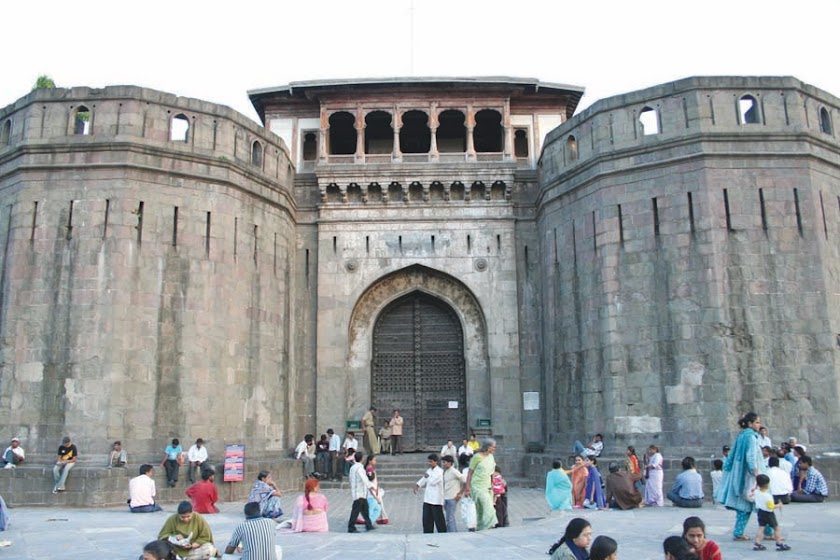This is my column in www.thenewsminute.com which appeared on Sept 1, 2014
http://www.thenewsminute.com/news_sections/1258
Maharashtra's natural world heritage site, Kaas Plateau, in trouble
The picturesque plateau of Western Maharashtra that blossoms into breathtaking site of flowers of myriad hues between June and September is a bit barren this year

Vinita Deshmukh | The News Minute | September 1, 2014 | 9.19 am IST
Kaas Plateau, one of the most precious parts of the Western Ghats, about 25 km from Satara in Western Maharashtra and spread over 1792 hecatres, is home to 405 flowering plant species that are recorded in the Red Data Book and attracts more than 50,000 tourists per day between June and September as it transforms into a carpet of resplendent colors due to the blossoming of hundreds and thousands of different coloured flowers.

It is the unprecedented tourist influx since the last few years that has alarmed botanists and environmentalists, as an average of 50,000 tourists have been thronging to Kaas each day during the flowering season, bringing along with them, pollution from their vehicles and trampling of plants and shrubs with their feet.
Thanks to the untiring efforts of the forest department, the Satara district collectorate and environmentalists, Kaas plateau was declared anatural world heritage site by the UNESCO in June 2012. This has spurred efforts to conserve it by restricting the number of visitors per day; charging them entry fee and fencing off the entire area in order to preserve its sanctity. This is as per UNESCO's recommendation to ``Review and strengthen buffer zones or other measures to provide increased protection or buffering for the values within the nominated property.’’ Accordingly, expansive wire fencing has been built around this plateau.

All pictures courtesy- Srinivas Varunjikar
While the fencing may have restricted human and animal movement, local environmentalists are now blaming the fencing for the low activity in flowering this season, the trend of which began last year. States Srinivas Varunjikar, journalist and activist for Kaas, ``fencing has restricted movement of grazing animals that are responsible for cross pollination. This has resulted in lesser flowers blooming, since the last year. We are now in the month of September, when the entire plateau turns into paradise, but so many portions are still barren, which is a very dangerous sign. Fencing has also restricted movement of other animals like leopards who cannot now cross to the other side. Fencing needs to be removed if we have to save Kaas and restrictions should be implemented in various other ways.’’
Rajendra Shende, Chairman,TERRE Policy Centre and Former .Director, UNEP,Paris, who has taken up this campaign, is working towards engaging local communities by making them aware of the need to preserve Kaas. He states, ``It is not only for keeping this beautiful colourful carpet with endless variety of flora for the years as show piece, but also to ensure its continued contribution to the natural balance , the agricultural productivity through the enhanced pollination, nutrient cycle and biodiversity.’’

The importance of Kaas has been spelt out by Environment Department, Government of Maharashtra. It states: ``Kaas and the nearby Koyna area is home to about 1,500 types of plants – 156 botanical families, 680 genera, 1452 species, 400 medicinal plants, and about 33 endangered varieties
.

More than 450 species of wild flowers bloom in and after monsoon season and most of them are endemic herbs. More than 850 species of flowering plants are reported from Kaas plateau, out of these plants 624 species have entered in the Red Data Book and most importantly 39 species from these Red Data Book species are found in Kaas Region only. The endemic species approximates 6 percent of the Red data species. It has become very urgent to take effective measures to protect this whole area in order to conserve the diverse, rare and endangered flora of Kaas plateau. ‘’
It further states that, “In recent years the popularity of Kaas Plateau, Satara has increased many folds and the increase in numbers of tourists have resulted in a direct or indirect impact on its bio-diversity. According to keen observation and analysis of experts, there are number of threats affecting to the biodiversity of Kaas. Among which Tourism is the biggest threats to Kaas which brings lakhs of tourists and thousands of vehicles every year. Due to the increase in numbers of vehicles; the tranquillity and peace of Kaas is highly disturbed resulting in breakdown of flora and fauna of ecosystem.’’
Kaas is an integral part of the ecology of the Western Ghats and again experts and local stakeholders need to further define, how Kaas can be saved, given that it is in trouble once again.

Some of UNESCO’s important recommendations:
- Take measures to reduce the impact of existing and planned infrastructure as well as disturbed areas on the values of the property,
- Review and strengthen buffer zones or other measures to provide increased protection or buffering for the values within the nominated property, and strengthen the ecological connectivity measures to ensure consistency and greater functional linkages between component sites,
- Improve coordination and integration between component parts of the property, particularly through the existing mechanisms of the Western Ghats Natural Heritage Management Committee and the preparation and implementation of an overarching management framework, for the serial property as a whole
- Facilitate increased engagement with all stakeholders to build awareness and support, foster participatory governance approaches, and ensure equitable sharing of benefits
- Harmonize arrangements between the 'Western Ghats Natural Heritage Committee' and the 'Western Ghats Ecology Expert Panel' and strengthen community membership and input through the establishment of the proposed 'Western Ghats Natural Heritage Conservation Authority' and other relevant advisory committees.
- Highly commends the State Party for its on-going commitment to ensure a comprehensive approach to conserving the globally recognised high biodiversity values of the Western Ghats, noting the scale and complexity of this area.

